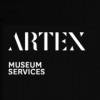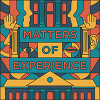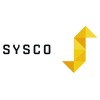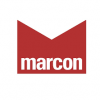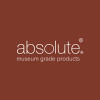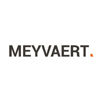
What can museums do be become more theatrical? From storytelling approaches to audience interaction, Liam Wiseman reveals the secrets of bringing history to life with a touch of drama
Anyone that has ever been into a museum or a theatre knows that they fundamentally provide different experiences to the audiences who walk through their doors; however, I believe that they are not so different. And more importantly, that they can learn a lot from one another about work processes and delivery of projects. Between 2017-2019, I ran a project to explore the history of Bristol Old Vic (the longest continuously running theatre in the English speaking world) through a variety of museum style interpretation projects, activity and outreach work. Not only was this a fascinating insight into the way that theatres work, it gave me quite a few ideas as to how museums can embrace a bit more theatricality in their work. This article is a condensed version of a presentation I gave at the Museum Ideas 2019 conference where I threw out some prompts and provocations of how museums can embrace some more theatricality and fun in their exhibitions and interpretation. And maybe it might help change your way of approaching your work, because after all, tradition is just peer pressure from dead people.
“Many museums tend to still veer on the side of just a bit too dull”
1. Be Theatrical (duh)
Do you ever go into a museum and question whether the experience you had was fun? Unfortunately I find myself asking this question all too often. Whilst we are long gone since the days of the stuffy museum and even stuffier curator (in most cases!), many museums tend to still veer on the side of just a bit too dull. Wouldn’t it be amazing if museums could get over the idea of themselves as custodians of history, and understand that the average museum audience member just wants to be interested and engaged, and maybe even have an emotional reaction to what they are seeing? To badly paraphrase a classic Cyndi Lauper song: museum audiences just wanna have fun. And this is where I believe elements of theatricality can help to support this. Whether you want to call it theatrical, flamboyant, or annoying, any museum that can harness the essence of theatricality is certain to grab people’s attention. Theatricality is all about successfully expressing narratives through engaging, exciting, and most importantly surprising content. It’s the surprising element where most museums fail to deliver. Now there are plenty of examples of museums working with theatres and acting groups to deliver drama or performance in the museum space. But how often are those pieces of content fundamentally tied and related to the interpretation or collections they hold? Ask any script writer and they’ll tell you that the crux of an excellent piece of drama is great characters and characterisation. You need an authorial voice to guide you through the experience, and for museums that doesn’t have to be the curatorial authorial voice. It is okay to give your exhibition or interpretation some personality, you know, and it is important to let audiences form their own opinions of what they have seen.
The unreliable narrator can be an excellent narrative device that makes the audience question what they’re seeing and how they feel about it. One of the things that made the Window to the Past (the augmented reality experience we created) so engaging for visitors was the characterisation of Kathleen Barker, the theatre historian who wrote the first book on the history of Bristol Old Vic, or the Theatre Royal Bristol as it used to be known. Being a historian, she provides an authorial voice, but we also added in excerpts of her personality from the various notes she made in her research to create a unique persona for the experience. Though it doesn’t always have to be people that guide the narrative, sometimes it can be themes or concepts. For us, the overall story behind the heritage work was described by the theatres’ artistic director as a 250 year love story between the theatre and the people of Bristol. Or as we less eloquently put it, Bristol loves its theatre innit. But however you choose to word it, a strong narrative thread that ties your interpretation makes for a more holistic experience in your museum or exhibition, and it’s the same in a theatre performance. If a show doesn’t have a strong narrative thread to hold it together then people will at best, get bored, or at worst, leave. The objects in your collection are how you represent an idea, a theme or a powerful story, and the desire to keep museums as solely factual institutions can keep them a bit dry. The Museums Association, Arts Council England, and other sector bodies, are pushing for dynamic museum collecting, curating and interpretation; and the development of activism within museums. We can’t do that if our visitors aren’t able to become emotionally attached to the material.

2. Get Emotional
There are a million different ways to tell stories, and museums tend to always use the same ones: through exhibitions and interpretation panels, with some audio guides thrown in if we’re feeling brave. The vast majority of exhibitions I see are focused on the objects in the collections, and the links between them, but don’t necessarily create an interesting narrative that brings them together. Like in a theatrical production, the objects in a museum are just the props for your story. A prop is there fundamentally to enhance a story, but it cannot tell a story by itself. The object provides a physical, tangible reference to what you are experiencing, and the context of its history provides the set and scenery. But we still ultimately need a cast, and building narratives around people or characters is vital to the development of these stories. The reason we need this is to encourage a stronger emotional attachment to what the audience is seeing or engaging with. Trust me, I love exhibitions using Roman pottery as much as the next guy, but even I have seen enough of it to last me a lifetime. Yet if you throw in some stories about the people who used the pottery, how they used it, their lives, day to day activities, hopes, dreams or aspirations and you’ve got me more involved. Likewise, a theatrical performance would mean very little if it was just the props, and the same can be said of museum exhibitions. There is absolutely nothing wrong with having some personality shining through your exhibitions, and if anything, it can make people feel more comfortable existing in that space.
“There is nothing wrong with having some personality shining through your exhibitions… it can make people feel more comfortable in that space”
But perhaps there is also something to be said for the way we approach telling these stories telling these stories outside of the museum. Exhibition marketing is pretty much always the same. It will be a poster that usually has a star object from the exhibition front and centre, with perhaps someone looking at it, or if it’s marketing for kids there is always a magnifying glass. For some reason. Are kids that attached to magnifying glasses? I can’t remember ever being particularly enamoured by them. I guess the aim is to encourage curiosity, but to be honest if I am looking at an exhibition poster, I am probably already curious about the exhibition. And this formula doesn’t really tell me much about the story or narrative I will be engaging with, or the emotional connection that I might make with the material. When it comes to marketing exhibitions like this, an emotional connection is hugely important. Which is why marketing for theatrical productions usually gives you a sense of the type of emotional experience you will have when watching that play or performance. Museum marketing doesn’t tend to be as immediately explicitly clear, so going into an exhibition, you might know the type of objects you will see, but you don’t necessarily know what it is that you’re going to experience. You don’t know how you’re going to feel. And the worst thing that can happen is if there is a tonal dissonance between the advertising of museum exhibitions, and the actual content of them.
“Is there the opportunity to include different narrative voices that explore historic content in a new way? Absolutely”
3. Bring in New Voices
One of the most significant aspects of this project was that it was led and developed by young people and emerging professionals. Apart from the artistic director, everyone who had a significant say on what happened here was under 25 years old. Museums can, and should, be representative of everyone in society, yet often still largely remain in a culture bubble. Now I’m not saying that theatres are perfect at this (far from it), but they are making significant efforts to be more inclusive, involve underrepresented groups in their artistic process, and open up their productions. Yet museums still guard their collections so tightly that it is almost impossible for anyone else to break in. What, you didn’t do a Masters degree? Then you can’t enter the room. You didn’t do a six month unpaid internship or couldn’t afford to do several years of volunteering work for nothing? Get on your bike mate. Of course I’m being facetious here, but the point absolutely stands that museums for the most part fail to address entry routes to sector overall. Reinterpretation could be a key way to address to this. Theatres regularly deliver new content and performances but also continuously reinterpret existing material. Those Shakespeare productions you see have been put on a million times before, so the director has to make this one new, different and interesting. And they tend to do this through bringing in younger voices, or ideas from outside the theatre community to do this. So in a museum, could it be possible to repeat an exhibition from a few years ago, with a new team working on it and a new key narrative? Possibly. Is there the opportunity to include different narrative voices that explore historic content in a new way? Absolutely. Can we be better at being open and transparent about the process of making exhibitions? We need to be. An example of this was the character tours for the opening of the heritage weekend. We worked with the Made in Bristol theatre group, young theatre makers aged between 18-25 based at Bristol Old Vic, to capture the characters and stories that grabbed them and bring those people to life in situ in the spaces their experiences would have taken place in. These included characters such as the three architects that designed various iterations of the theatre, serving staff from when it first opened, and actors and audiences from various time periods. So not only did we have a variety of stories and content from people at different levels of society, but we also had it developed by young, imaginative, engaged people, bringing their new ideas into it and giving them a paid opportunity to develop their own theatrical practise. That changed the entire way that the organisation was perceived, and has made it more accessible for a whole generation of new people.

4. Be Reactive and Interactive
There seem to be a never-ending stream of protests at the moment, and for good reason. Whether it is a protest over an unelected prime minister shutting down parliament, fighting against increasing fascism, or quite literally the end of the world; it is clear that in the future this time will be recognised as a significant moment in history. I would say that some museums have got a bit better at being reactive and being able to discuss contemporary topics. But with an overall lack of collecting contemporary protest material, it is clear that museums are still too slow at engaging with current world issues. Working in a theatre environment, staff were able to bring conversations like that together really quickly, and actively deliver on it through a performance, workshop, or experimental experience. Perhaps too much when it comes to Brexit. Trust me, we don’t need any more Brexit performances. But the point is that the creativity, the will, and the drive to talk about contemporary issues and societal movements in an innovative way is front and centre of theatre programming.
“What is in your collections and what is on display — and tellingly, what isn’t — is a political statement”
And it is also starkly clear that in museums, the collections that are the most at-risk are the ones that are related to or focused on underrepresented communities. If we take a look at the misrepresentation and aggression surrounding transsexuality at the moment, there appears to be very little collected by museums that will be able to effectively report on these stories in the future (apart from the brilliant Museum of Transology, but even that collection is currently not safe). Museums run the risk of ending up in a similar position where it became difficult to explore LGBT+ issues during the anniversary of the partial decriminalisation of homosexuality in 2017 by having not actively collected this material during the 1960s when the activism was actually happening. Now we know that standing up for yourself and your beliefs is one of the hardest things you can do, but we also know that museums are not neutral. The very essence of what is in your collections and what is on display (and tellingly, what isn’t) is a political statement. Theatres love being political, it gives them so much creative freedom and ideas, and the way that political ideologies and social issues are represented through theatre is so creative and bizarre. Whilst I recognise that some museums run by local councils have to take particular stances or refrain from talking about political issues, the majority of museums are free to take a stand, and we absolutely have to. The museum leadership might not always understand or be onside, but just remember: there is no such thing as a good leader who doesn’t listen to or who isn’t open to criticism.
5. Put on a good fucking show!
Like theatres, museums are places that people go to experience stories. And a good story is key to their enjoyment of the museum. Ensuring the development of interesting narratives that embrace what is successful about live performance, and placing it in the context of a museum exhibition could be the key to the next generation of museum interpretation. Let’s all be bold, be engaged, and most importantly, be theatrical.
Liam Wiseman, Relationship Manager, Museums, Arts Council England
Prior to joining Arts Council England, Liam was Heritage Engagement Manager for Bristol Old Vic
Published online 30 March 2020. This article is based on a paper delivered at the Museum Ideas 2019 conference.
Buy the Book of the Conference









